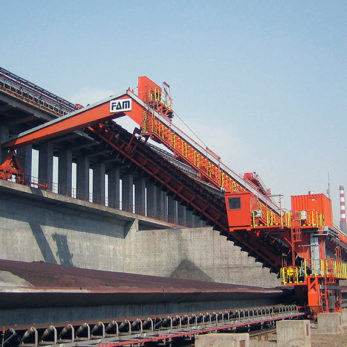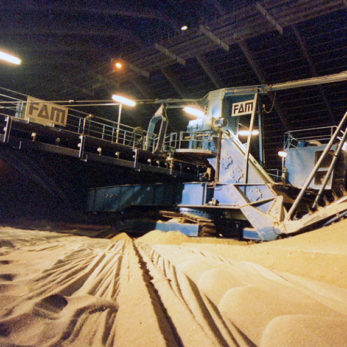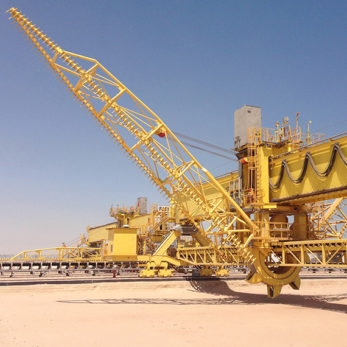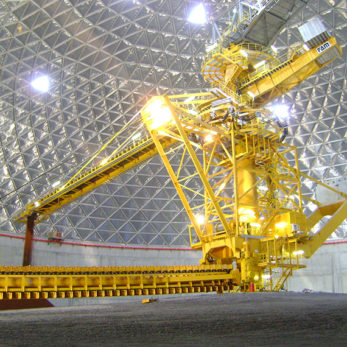By enabling consistent mixing of bulk materials over time, blending beds help avoid fluctuations in feed composition that can disrupt production or increase energy use. In mining, blending beds support a uniform supply of ore to crushers or mills — even when the material comes from multiple seams — which stabilises throughput and helps reduce unplanned maintenance. They are also used for homogenising overburden or low-grade material prior to backfilling, improving moisture balance and material structure for more efficient handling and environmental rehabilitation.
In steel production, blending iron ore and coal into controlled, homogeneous layers supports more efficient smelting processes and ensures better furnace performance. Power plants benefit from more stable combustion conditions when blending coal with varying calorific values. In cement manufacturing, blending beds play a key role in maintaining a consistent limestone feed, reducing chemical variability before the raw mix enters the kiln – a critical factor for product quality and energy efficiency. Across these applications, homogenisation is achieved through controlled stacking and reclaiming methods that ensure consistency, reduce variability, and support FIFO (First-In, First-Out) operation where required.
Advanced automation and efficient material handling make blending beds a cost-effective choice for long-term operation. Their design can be tailored to site-specific requirements — from circular layouts for continuous, enclosed storage to longitudinal systems that handle high volumes with separate stacking and reclaiming — providing flexibility to match your available space and operational needs.

 We are working 24/7 to be your Partner of Choice.Our Customer Support services are designed with you in mind, offering more than just traditional support. We're committed to building a lifelong and sustainable partnership, staying by your side throughout the entire lifecycle of your systems and assets.Learn more
We are working 24/7 to be your Partner of Choice.Our Customer Support services are designed with you in mind, offering more than just traditional support. We're committed to building a lifelong and sustainable partnership, staying by your side throughout the entire lifecycle of your systems and assets.Learn more












